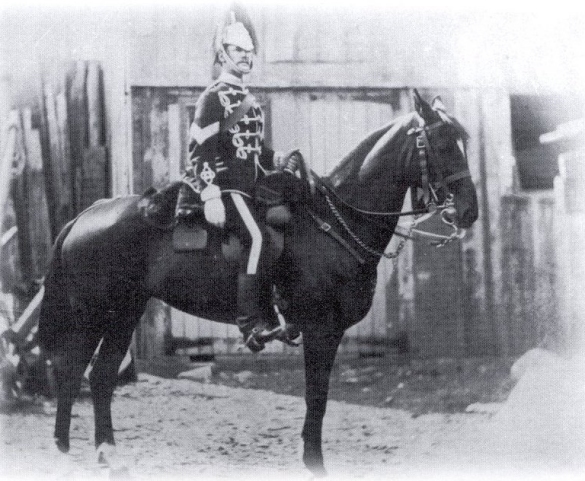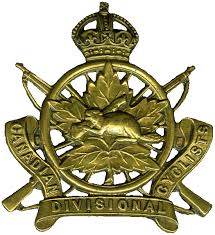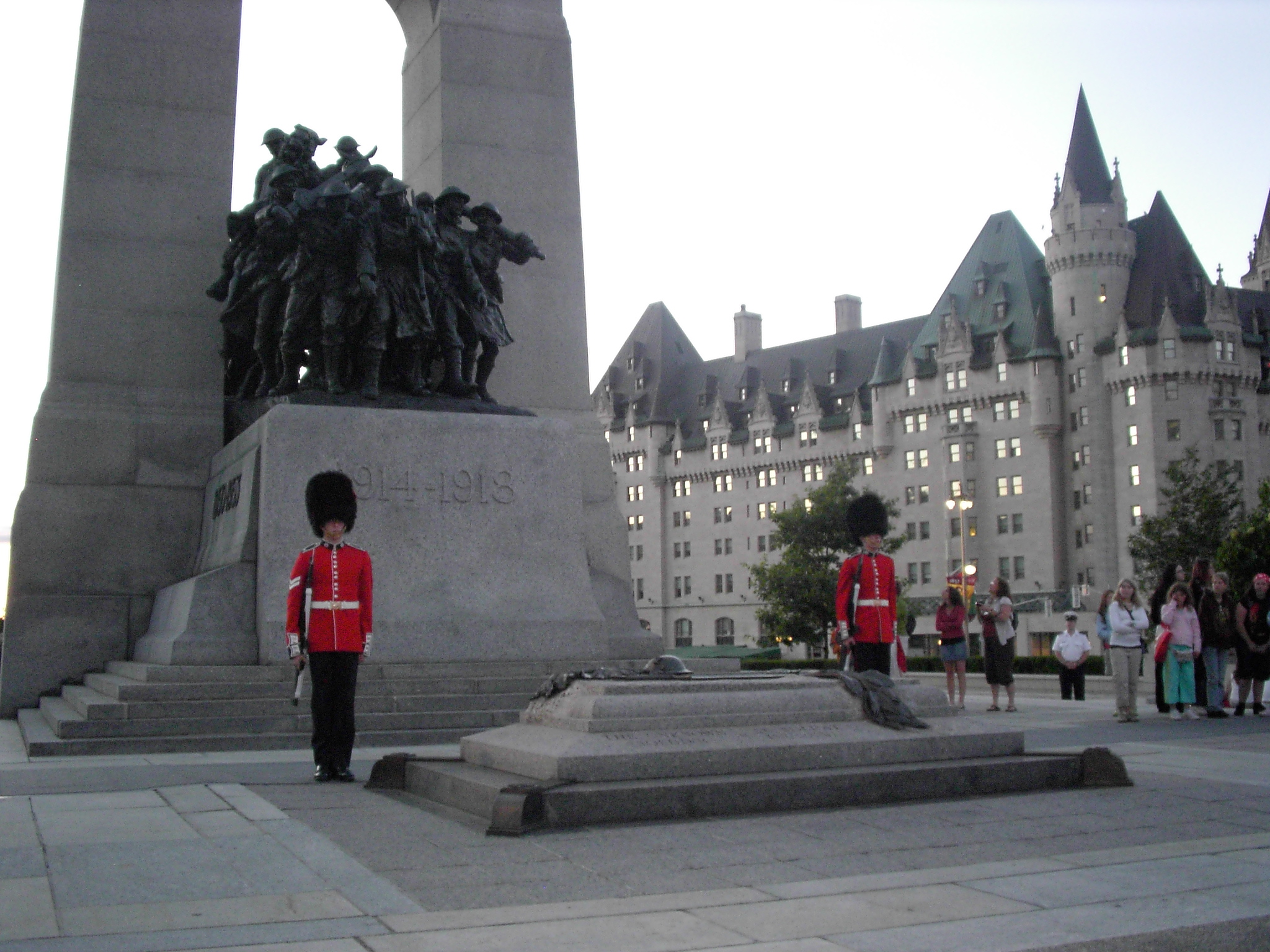|
6 Intelligence Company
6 Intelligence Company (6 Int Coy; ) is a military intelligence unit of the Canadian Army. It is a line unit that falls directly under 3rd Canadian Division command, which is headquartered in Edmonton. The company is divided into three platoons, which are in Vancouver, Winnipeg, and Edmonton, with a detachment in Calgary. The members of the unit are recruited from other military trades as well as from various civilian organizations. The intelligence operators and intelligence officers of the unit train regularly in order to support domestic and foreign missions at the tactical, operational, and strategic levels. Lineage The unit history dates to August 30, 1950, when No. 4 Intelligence Training Company was formed in Vancouver (though the formation of the unit was announced by Army headquarters February 27, 1950). On July 15, 1956, the minister of national defence approved the relocation of a detachment to Edmonton. Two years later Western Command proposed that the detachment in ... [...More Info...] [...Related Items...] OR: [Wikipedia] [Google] [Baidu] |
Canadian Army
The Canadian Army () is the command (military formation), command responsible for the operational readiness of the conventional ground forces of the Canadian Armed Forces. It maintains regular forces units at bases across Canada, and is also responsible for the Army Reserve, the largest component of the Primary Reserve. The army is headed by the Commander of the Canadian Army and Chief of the Army Staff, who is subordinate to the Chief of the Defence Staff (Canada), Chief of the Defence Staff. The army is also supported by 3,000 civilian employees from the public service. The army was formed in 1855, as the Canadian Militia#Active militias, Active Militia, in response to the threat of the United States to the Province of Canada after the British garrison left for the Crimean War. This militia was later subdivided into the Permanent Active Militia and the Non-Permanent Active Militia. Finally, in 1940, an order in council changed the name of the Active Militia to the Canadian Arm ... [...More Info...] [...Related Items...] OR: [Wikipedia] [Google] [Baidu] |
History Of The Canadian Army
The history of the Canadian Army, began when the title first came into official use in November 1940, during the Second World War, and is still used today. Although the official titles, Mobile Command, and later Land Force Command, were used from February 1968 to August 2011, "Canadian Army" continued to be unofficially used to refer to the ground forces of the Canadian Armed Forces, much as it has been from Confederation in 1867 to the present. The term was often even used in official military publications, for example in recruiting literature and the official newspaper of the Canadian Forces, ''The Maple Leaf''. On August 16, 2011, the title, "Canadian Army", was officially restored, once again bringing the official designation in line with common and historical usage. Formation Prior to Canadian Confederation in 1867, defence for the colonies that comprise present-day Canada was dependent on the armies of colonial powers. The military of New France (1608–1763) was dependent ... [...More Info...] [...Related Items...] OR: [Wikipedia] [Google] [Baidu] |
Intelligence Units And Formations Of Canada
Intelligence has been defined in many ways: the capacity for abstraction, logic, understanding, self-awareness, learning, emotional knowledge, reasoning, planning, creativity, critical thinking, and problem-solving. It can be described as the ability to perceive or infer information and to retain it as knowledge to be applied to adaptive behaviors within an environment or context. The term rose to prominence during the early 1900s. Most psychologists believe that intelligence can be divided into various domains or competencies. Intelligence has been long-studied in humans, and across numerous disciplines. It has also been observed in the cognition of non-human animals. Some researchers have suggested that plants exhibit forms of intelligence, though this remains controversial. Etymology The word ''intelligence'' derives from the Latin nouns '' intelligentia'' or '' intellēctus'', which in turn stem from the verb '' intelligere'', to comprehend or perceive. In the Middl ... [...More Info...] [...Related Items...] OR: [Wikipedia] [Google] [Baidu] |
4 Intelligence Company
4 Intelligence Company (4 Int Coy), in French and officially 4ième Compagnie du renseignement (4e Cie de rens), is a Canadian Forces Primary Reserve Intelligence Branch unit headquartered in Montreal, with a platoon at Valcartier Garrison near Quebec City. It is a part of the 2nd Canadian Division. The unit draws its historical lineage from the 4th Troop of Volunteer Cavalry of Montreal (or Guides) that took part in the actions to repel Fenian raiders attempting to invade Canada in 1866. Members of the unit deploy on domestic and foreign operations, and are primarily responsible for tactical, or combat intelligence. Lineage 4 Intelligence Company perpetuates the presence of a military intelligence unit in Montreal that can be traced to the original 4th Troop of Volunteer Cavalry of Montreal (or Guides), formed on February 7, 1862. The unit was later renamed The Royal Guides or Governor General's Body Guard for Lower Canada, and later The Guides. The uniform (pictured) combin ... [...More Info...] [...Related Items...] OR: [Wikipedia] [Google] [Baidu] |
3 Intelligence Company
3 Intelligence Company (abbreviated 3 Int Coy) is a line unit reporting directly to the 5th Canadian Division which is headquartered in Halifax, Nova Scotia. The Intelligence Operators & Intelligence Officers of the unit train regularly to augment their Regular Force counterparts on domestic and foreign operations. Tracing its lineage to the original 3 Intelligence Company (1950) that was dissolved at Unification of the Canadian Forces, Unification, the current unit was stood up on November 4, 1995 at a parade near the old library building in Royal Artillery Park, downtown Halifax. Lineage The Canadian Army announced the formation of 3 Intelligence Company on February 27, 1950 and the unit was formally stood up on November 15, 1950. The first commanding officer was Major Edward Fairweather Harrington who had formerly served in the Halifax Rifles (23rd Armoured Regiment). Maj Harrington served in the First World War with the Royal Flying Corps, and in the Second World War with th ... [...More Info...] [...Related Items...] OR: [Wikipedia] [Google] [Baidu] |
2 Intelligence Company
2 Intelligence Company (abbreviated 2 Int Coy) is a Canadian Armed Forces Primary Reserve Intelligence Branch unit based in Toronto, headquartered at Denison Armoury. It is part of the 4th Canadian Division. Its activities were confidential until the 1980s. The Intelligence Officers and Operators of the unit reside in the Greater Toronto Area, work as professionals in the business community and are also active in numerous community service organizations. They deploy on domestic and foreign operations, and are primarily responsible for tactical, or combat intelligence. Recent deployments include to Cyprus, Bosnia, Afghanistan, Kuwait, and Canada. Lineage 2 Intelligence Company perpetuates the presence of a military intelligence unit in Toronto that can be traced back to the original No. 2 Guides Company that was formed April 1, 1903. As mounted units, Guides Companies were tasked to survey their respective regions as well as to collect information of potential military intel ... [...More Info...] [...Related Items...] OR: [Wikipedia] [Google] [Baidu] |
Intelligence Branch (Canadian Forces)
The Intelligence Branch () is a personnel branch of the Canadian Forces (CF) that is concerned with providing relevant and correct information to enable commanders to make decisions. The branch works in a variety of challenging positions, at home and abroad, meeting the needs of commanders and operational planners of the Canadian Forces at all levels and in all environments. Since the branch's inception, members have deployed overseas to Bosnia and Herzegovina, Haiti, Somalia, Rwanda, Timor-Leste, Latvia, Ukraine, Mali, Kuwait, Afghanistan, and Iraq. Branch members have also deployed domestically on a number of operations. These include tasks related to the January 1998 North American ice storm, ice storms in Quebec, 1997 Red River flood, floods in Winnipeg, fires in British Columbia and the Canadian military's response to the COVID-19 pandemic. History The first intelligence guides unit in Canada was the "4th Troop of Volunteer Cavalry of Montreal (or Guides)", formed on 7 Fe ... [...More Info...] [...Related Items...] OR: [Wikipedia] [Google] [Baidu] |
Canadian Forces
The Canadian Armed Forces (CAF; , FAC) are the unified Military, military forces of Canada, including sea, land, and air commands referred to as the Royal Canadian Navy, Canadian Army and the Royal Canadian Air Force. Under the ''National Defence Act'', the Canadian Armed Forces are an entity separate and distinct from the Department of National Defence (Canada), Department of National Defence (the Government of Canada, federal government department responsible for the administration and formation of defence policy), which also exists as the civilian support system for the forces. The Commander-in-Chief of the Canadian Armed Forces, command-in-chief of the Canadian Armed Forces is constitutionally vested in the Monarchy of Canada, monarch, , who is represented by the Governor General of Canada, Governor General. The Chief of the Defence Staff (Canada), chief of the Defence Staff is the professional head of the Canadian Armed Forces, who under the direction of the Minister of Nati ... [...More Info...] [...Related Items...] OR: [Wikipedia] [Google] [Baidu] |
Military History Of Canada
The military history of Canada spans centuries of conflicts within the country, as well as international engagements involving the Canadian Armed Forces, Canadian military. The Indigenous nations of Canada engaged in conflicts with one another for millennia. The arrival of European settlers in the 17th century led to new alliances and hostilities among Indigenous nations and colonial powers, leading to conflicts such as the Beaver Wars. The late 17th and 18th centuries saw French and Indian Wars, four major British-French conflicts fought in Canada, culminating with the British Conquest of New France, conquest of New France in 1760. This reshaped the region and contributed to the American Revolutionary War, during which American attempts to Invasion of Quebec (1775), seize Quebec and Nova Scotia in the American Revolution, spark a revolt in Nova Scotia failed. The 19th century brought both external threats and internal challenges to British North America. While its colonies repell ... [...More Info...] [...Related Items...] OR: [Wikipedia] [Google] [Baidu] |
Military Intelligence
Military intelligence is a military discipline that uses information collection and analysis List of intelligence gathering disciplines, approaches to provide guidance and direction to assist Commanding officer, commanders in decision making process, their decisions. This aim is achieved by providing an intelligence analysis, assessment of data from a range of sources, directed towards the commanders' mission requirements or responding to questions as part of operational or campaign planning. To provide an analysis, the commander's information requirements are first identified, which are then incorporated into intelligence collection, analysis, and dissemination. Areas of study may include the operational environment, hostile, friendly and neutral forces, the civilian population in an area of combat operations, and other broader areas of interest. Intelligence activities are conducted at all levels, from tactical to strategic, in peacetime, the period of transition to war, and d ... [...More Info...] [...Related Items...] OR: [Wikipedia] [Google] [Baidu] |
Winnipeg
Winnipeg () is the capital and largest city of the Provinces and territories of Canada, Canadian province of Manitoba. It is centred on the confluence of the Red River of the North, Red and Assiniboine River, Assiniboine rivers. , Winnipeg had a city population of 749,607 and a metropolitan population of 834,678, making it Canada's List of the largest municipalities in Canada by population, sixth-largest city and List of census metropolitan areas and agglomerations in Canada, eighth-largest metropolitan area. The city is named after the nearby Lake Winnipeg; the name comes from the Cree language, Western Cree words for 'muddy water' – . The region was a trading centre for Indigenous peoples in Canada, Indigenous peoples long before the European colonization of the Americas, arrival of Europeans; it is the traditional territory of the Anishinaabe (Ojibway), Ininew (Cree), Oji-Cree, Dene, and Dakota people, Dakota, and is the birthplace of the Métis people in Canada, Métis ... [...More Info...] [...Related Items...] OR: [Wikipedia] [Google] [Baidu] |
Vancouver
Vancouver is a major city in Western Canada, located in the Lower Mainland region of British Columbia. As the List of cities in British Columbia, most populous city in the province, the 2021 Canadian census recorded 662,248 people in the city, up from 631,486 in 2016. The Metro Vancouver area had a population of 2.6million in 2021, making it the List of census metropolitan areas and agglomerations in Canada#List, third-largest metropolitan area in Canada. Greater Vancouver, along with the Fraser Valley, comprises the Lower Mainland with a regional population of over 3million. Vancouver has the highest population density in Canada, with over , and the fourth highest in North America (after New York City, San Francisco, and Mexico City). Vancouver is one of the most Ethnic origins of people in Canada, ethnically and Languages of Canada, linguistically diverse cities in Canada: 49.3 percent of its residents are not native English speakers, 47.8 percent are native speakers of nei ... [...More Info...] [...Related Items...] OR: [Wikipedia] [Google] [Baidu] |










